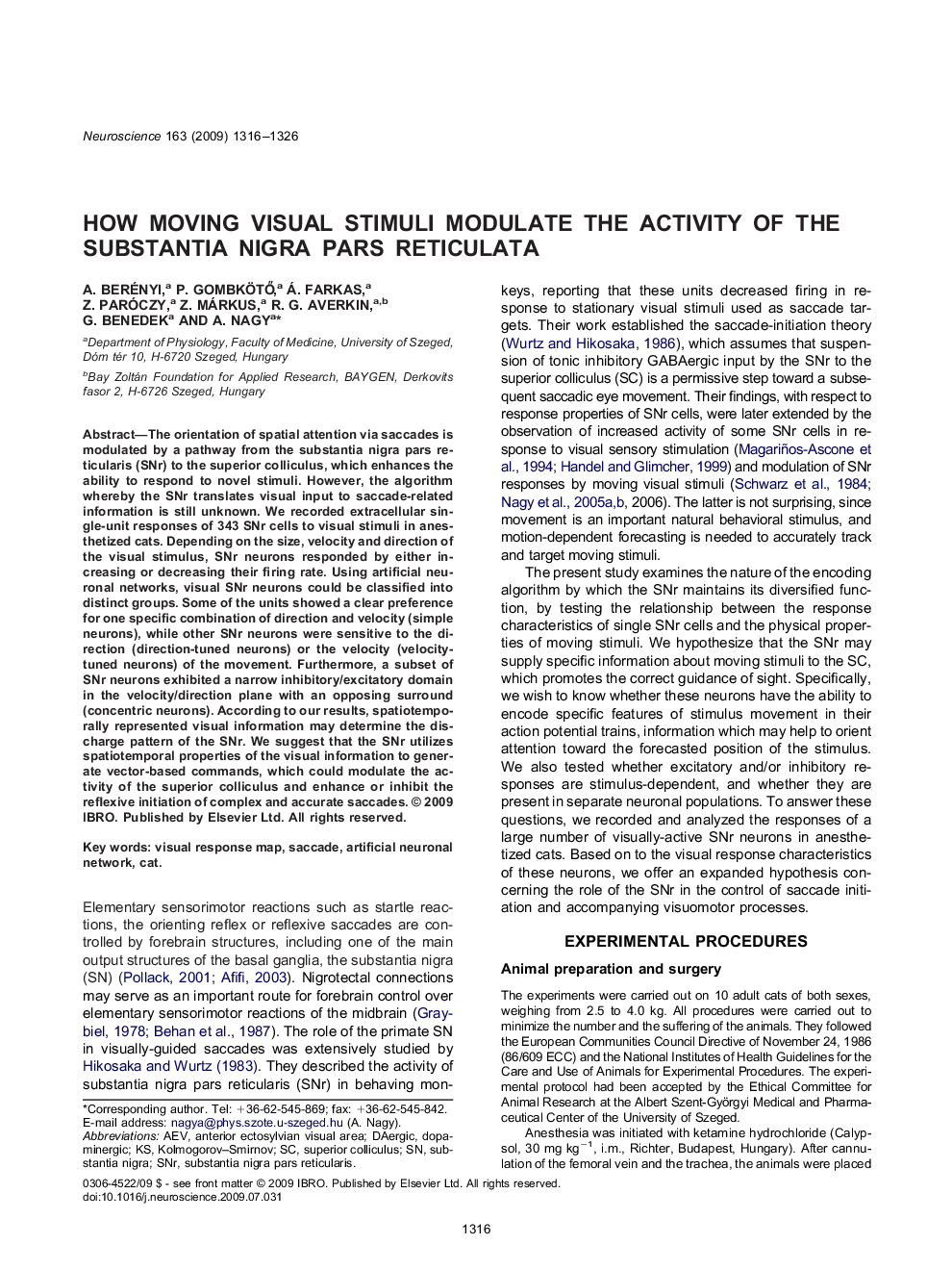| Article ID | Journal | Published Year | Pages | File Type |
|---|---|---|---|---|
| 6277724 | Neuroscience | 2009 | 11 Pages |
Abstract
The orientation of spatial attention via saccades is modulated by a pathway from the substantia nigra pars reticularis (SNr) to the superior colliculus, which enhances the ability to respond to novel stimuli. However, the algorithm whereby the SNr translates visual input to saccade-related information is still unknown. We recorded extracellular single-unit responses of 343 SNr cells to visual stimuli in anesthetized cats. Depending on the size, velocity and direction of the visual stimulus, SNr neurons responded by either increasing or decreasing their firing rate. Using artificial neuronal networks, visual SNr neurons could be classified into distinct groups. Some of the units showed a clear preference for one specific combination of direction and velocity (simple neurons), while other SNr neurons were sensitive to the direction (direction-tuned neurons) or the velocity (velocity-tuned neurons) of the movement. Furthermore, a subset of SNr neurons exhibited a narrow inhibitory/excitatory domain in the velocity/direction plane with an opposing surround (concentric neurons). According to our results, spatiotemporally represented visual information may determine the discharge pattern of the SNr. We suggest that the SNr utilizes spatiotemporal properties of the visual information to generate vector-based commands, which could modulate the activity of the superior colliculus and enhance or inhibit the reflexive initiation of complex and accurate saccades.
Keywords
Related Topics
Life Sciences
Neuroscience
Neuroscience (General)
Authors
A. Berényi, P. GombkötÅ, Á. Farkas, Z. Paróczy, Z. Márkus, R.G. Averkin, G. Benedek, A. Nagy,
